

Professional BoatBuilder Magazine
Obituary: derek kelsall.
By Dieter Loibner , May 31, 2023

Derek Kelsall in the cockpit of Toria sails with his wife, Clare, at the helm.
The sailing world has lost a pioneering multihull designer and boat-builder. Derek Kelsall, who famously introduced Eric Tabarly to multihulls, and who was one of the first to champion foam sandwich construction, died at 89 last December in Thames, New Zealand.
Born in rural North Wales on May 15, 1933, the son of a farm laborer and a schoolmistress, Kelsall spent his early childhood in humble surroundings. Later he studied engineering at Bristol University but was unable to finish the course for lack of funds. He entered the oil exploration business, working in Libya and Texas, but soon traded his desk job for sailing and building multihulls in the Caribbean. In a spur-of-the-moment decision, he entered the second edition of the Observer Singlehanded Transatlantic Race (OSTAR) in 1964, racing Folatre, a 35′ (10.7m) plywood Arthur Piver–designed trimaran.
The boat was ketch rigged and equipped with an early wind vane self-steering system, but there was much concern surrounding Folatre and her young skipper, as she was the first multihull to enter the race without ballast (two other catamarans in the race had been fitted with twin ballast keels). Sadly, five days into the race while lying in second place, Folatre struck an underwater object, destroying her rudder. Kelsall returned to Plymouth, fixed the rudder, restarted, and finished in Newport, Rhode Island, in the then-respectable time of 34 days. [With a otal elapsed time of 61 days, he officially finished 13th—Ed.]
He decided to produce his own trimaran design—the 45′ (13.7m) Toria, named after his newly born daughter. Toria was one of the most influential multihulls ever, establishing the fundamental concept of modern racing trimarans subsequently adopted by ORMA (Ocean Racing Multihull Association) 60s, Ultimes, and Ocean Fifties. Toria had twin akas connecting the relatively high-volume, fine-bowed amas to the main hull, their geometry such that at rest only one ama ever touched the water. Significantly, she was the first boat built in the U.K. using foam sandwich construction, with Airex foam as the core material.

Toria, built in foam sandwich and with high-volume amas, was ahead of her time and defined the genre of offshore racing trimarans in the 1960s.
Aboard Toria, Kelsall and Martin Minter-Kemp competed in the Royal Western Yacht Club’s first doublehanded Round Britain and Ireland Yacht Race in 1966, comfortably winning and thus posting the first-ever multihull victory in a major offshore race. This success created considerable interest in offshore trimarans, including from famous French skipper Eric Tabarly, who two years earlier had won the OSTAR on Pen Duick II, a 44′ (13.4m) monohull. Tabarly helped Kelsall deliver Toria from Cornwall to London, where it was displayed at the 1967 London Boat Show. Impressed, Tabarly returned to France to work on his first trimaran with French naval architect André Allègre and builder Chantiers de la Perrière.
The 68′ (20.7m) Pen Duick IV was a groundbreaking trimaran design, fitted with a ketch rig on twin rotating wing masts. But compared to what Kelsall built at this time in foam sandwich, her aluminum construction and tubular crossbeams appeared quite conservative. Tabarly was unable to defend his title in the 1968 OSTAR when the autopilot failed after a collision.
Derek Kelsall Built Winners
As the builder of the 57′ (17.4m) monohull Sir Thomas Lipton—the winning yacht in that race, designed by Robert Clark and sailed by Geoffrey Williams—Kelsall shared in her success. It was ironic that a multihull proponent like Kelsall would build a monohull to win the OSTAR, which saw a rising tide of multihull entries. The top multihull finisher was the super-spartan 40′ (12.2m) proa Cheers, designed by Dick Newick, built on St. Croix, U.S. Virgin Islands, and skippered by American Tom Follett.
Kelsall continued to enjoy success into the 1980s with his small trimaran designs, including Trifle, built for Royal Yacht Squadron Commodore Major-General Ralph Farrant; and the 44′ trimaran Trumpeter, which finished third in the gale-ridden 1970 Round Britain and Ireland with American Phil Weld at the helm.
His greatest series of raceboats were the various Three Legs of Mann trimarans built and sailed by Isle of Man–based Nick Keig. The most successful of these was the 53′ (16.2m) Three Legs of Mann III, which Keig raced to second place in the 1980 OSTAR; however the most innovative was VSD, a hybrid cattrimaran with a flying center pod, a concept subsequently adopted by catamarans like the D35s and Alinghi 5.
After Sir Thomas Lipton’s 1968 OSTAR victory, Kelsall used his skills in foam-sandwich construction to build the Alan Gurney–designed Great Britain II for Chay Blyth, at 78′ (23.8m) LOA the largest composite boat ever at the time of her launching in 1973. In the first Whitbread Round the World Race in 1973–74 she was the scratch boat, took line honors, set the elapsed time record at 144 d 10 h [correcting out to 6th place overall—Ed.], and went on to compete in five further editions of that contest.

Kelsall with his partner, Paula Hesterman, in New Zealand.
Subsequently, Kelsall designed and built two large trimarans for Chay Blyth: the 80′ (24.4m) Great Britain III, and the 53′ Great Britain IV, which won the 1978 doublehanded Round Britain and Ireland Yacht Race. Spearheaded by the likes of Eric Tabarly and Alain Colas, large racing multihulls became popular in France during the 1980s, but Kelsall never rose to prominence there, even though Eugène Riguidel and Gilles Gahinet won the double-handed 1979 Transat Lorient– Kelsall with his partner, Paula Les Bermudes–Lorient on Hesterman, in New Zealand. VSD, passing Tabarly and Marc Pajot aboard Paul Ricard before the finish. Kelsall also designed the giant William Saurin for Riguidel, at 93′ (28.3m) LOA the world’s largest trimaran when she was launched in 1982.
From the mid-1980s Kelsall’s work as a yacht designer focused on cruising catamarans and the Kelsall Swiftsure Sandwich technique (KSS), in which flat panels are laid up on a table to speed construction. He first used KSS in 1973 and kept improving the process over subsequent decades, building everything from small day boats to giant passenger ferries, catamarans such as the Space 55, Suncat 40, Islander 39, and larger one-offs.
After Kelsall’s first wife, Clare, succumbed to Parkinson’s disease, he continued to build boats, and with new partner Paula Hesterman made his home in Waihi, just north of Tauranga, New Zealand.
-James Boyd
[A version of this obituary appears on YachtsandYachting .com. —Ed.]
Read more Construction , Design , Obituary , People/Profiles , Rovings , Uncategorized articles

- CNC Construction on the Rise
How computer-aided design and software-controlled manufacturing technologies have reshaped custom and semi-production boatbuilding.

- Marine Trade Education News
Ferretti Group Adds Trade Schools The Italian luxury yacht builder, who owns upscale brands such as Riva, Ferretti, Italma, CRN, Wally, and Pershing, announced the opening of marine trade schools… Read more »

Hull Vane: A Wing With Benefits
Typically, military ships are designed and built for specific missions, not to curb their carbon footprint. However, if the Dutch navy serves as an example, that is about to change…. Read more »

Recent Posts
- Learn Electrical Systems from Nigel Calder
- PRO-SET Epoxy Named an Official Supplier for New York Yacht Club American Magic, Challenger for the 37th America’s Cup
- Sea Hawk Paints’ Colorkote is ‘reinventing the art of antifouling’
- Companies (82)
- Construction (105)
- Design (156)
- Drawing Board (8)
- Education (24)
- Environment (15)
- Events (20)
- Materials (48)
- Obituary (17)
- People/Profiles (46)
- Products (16)
- Propulsion Systems (30)
- Racing (15)
- Repair (37)
- Rovings (313)
- Short Cuts (3)
- Sponsored Partner News (13)
- Systems (80)
- Task Sheet (1)
- Uncategorized (26)
- Wood to Glass (7)
ProBoat.com Archives
BoatNews.com
Derek Kelsall, the naval architect who invented the modern trimaran
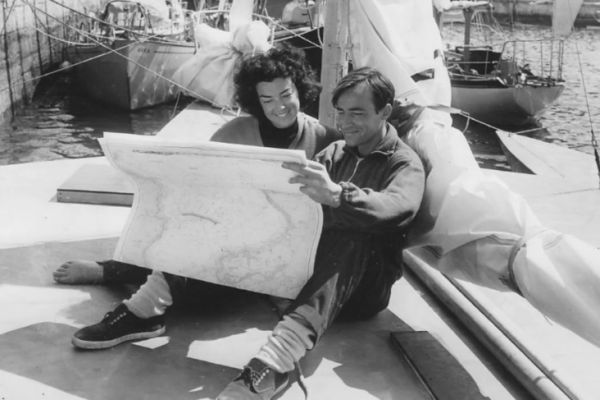
The world of ocean racing has lost one of its pioneers. Architect Derek Kelsall passed away at the age of 89 on December 11, 2022. He will be remembered as the man who designed the first modern racing trimaran and developed sandwich construction. A look back at the history and career of an ocean racing pioneer.
Rural origins
Derek Kelsall was born into a modest family in Wales on May 15, 1933. His father, a farm worker, and his mother, a teacher, instilled in him traditional values. As a student, he entered the University of Bristol, but was unable to complete his studies due to lack of funds.
As part of his military service, he was deployed for a full year in Kenya. Upon his return, he entered the oil industry and was hired by BP.
After starting his career in the Persian Gulf countries, he was sent to an operation in Texas.
A transatlantic race with his first multihull
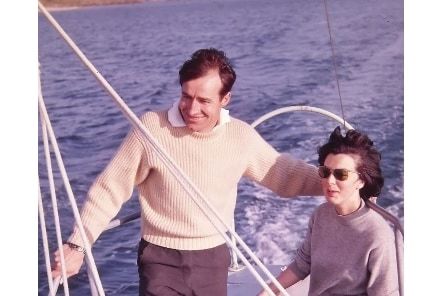
It was during this period, in the Caribbean Sea , that Derek learned how to build and sail multihulls. For the first time in his life, he had the money to become a skipper and built a 35-foot plywood trimaran which he named Crazy . Designed by Arthur Piver, this trimaran is rigged as a ketch and is not equipped with ballast, which was the norm at the time.
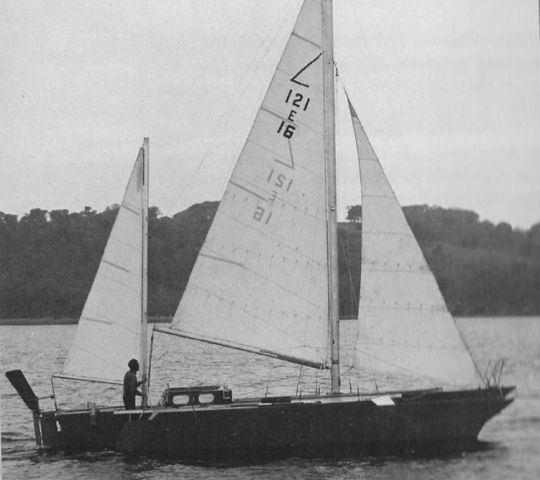
Then on a whim, and supported by his young wife Clare, Derek signs up for the 2 e edition of the English Transat in 1964 and took the start of the famous transatlantic race between Plymouth and Newport. He found himself alongside competitors such as Francis Chichester and Eric Tabarly , who mentions him in his memoirs as a " an attractive engineer, whose trimaran can create a surprise downwind through the trade winds.
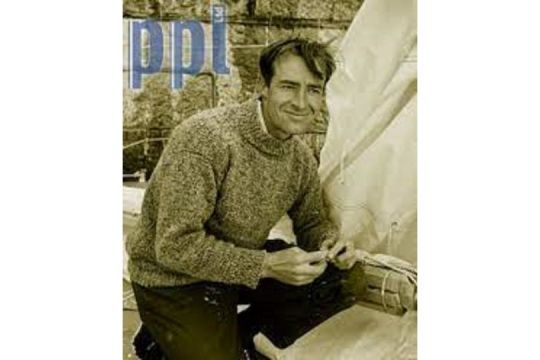
Thanks to favorable conditions, Folâtre got off to a good start, but broke his rudder after five days of racing. After repairing in Plymouth, Kelsall took to the sea again and completed the journey in 34 days, while Tabarly crossed the finish line as the winner after 27 days at sea.
The pioneer of the oceanic trimaran
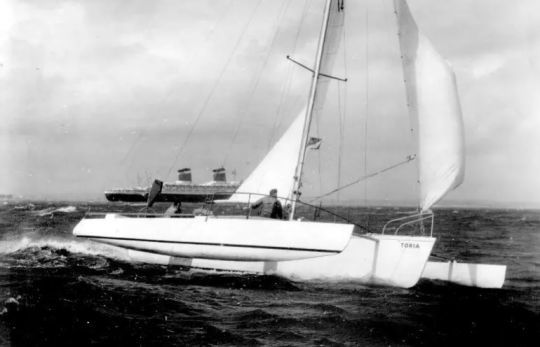
Convinced of the merits and potential of a multihull in an ocean race, Kelsall used his engineering background to design Toria a 45-foot trimaran. A visionary, Derek brought to his multihull a plethora of innovations that would inspire ocean racing for decades.
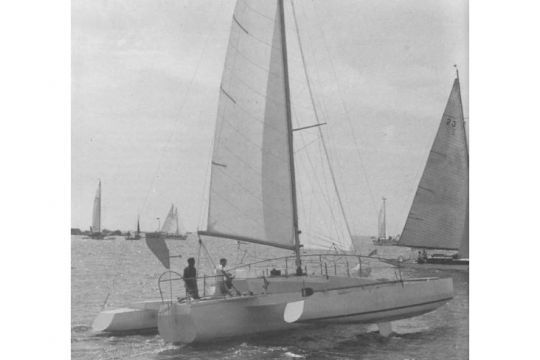
Built in a sandwich construction on an Airex foam base, Toria has long, bulky floats, connected to the central hull by two parallel arms. Its wetted surface is reduced, as it sails on two hulls when under sail. The microcosm of ocean racers was skeptical at the launch of Toria the monohull is still preferred in European culture.
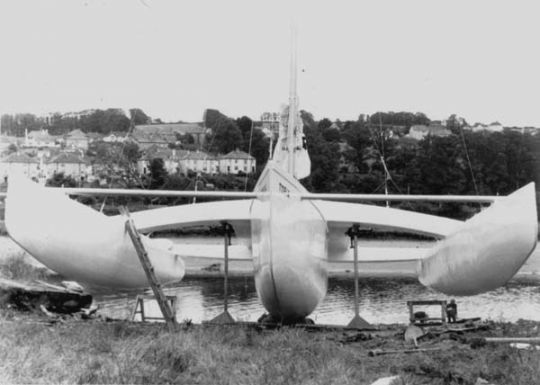
Tabarly is invited by Derek to sail on Toria during a delivery trip to the south of England. On his return to France, Tabarly was amazed by the performance of the English trimaran and began designing Pen Duick 4. But for reasons of culture and cost, he turned to the French architect André Allègre to design this 68-foot aluminum trimaran. Kelsall will regret for a long time not to have been solicited for this innovative project.
The foam sandwich construction technology developed by Kelsall interested Sir Thomas Lipton, who asked him to build a 60-foot monohull to compete in the 1968 Ostar. Due to several breakdowns, Derek finished in 5th place e place in this edition, which was won by Sir Thomas Lipton. Tabarly and his Pen Duick 4, victim of a collision with a cargo ship, had to turn back.
1970-1980: the rise of the racing trimaran
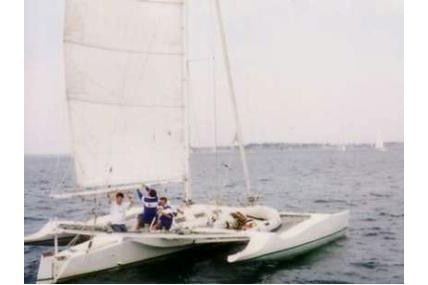
In the early 1970s, Derek had further success in trimaran design, with the launches of Toria Triffle , Three Legs of Mann and Trumpeter who shine in Anglo-Saxon regattas. In 1973, he built for Chay Blyth the Great Britain 2 which is the largest composite boat of its time.
In the 1980s, all ocean racers turned to the trimaran. The projects flowed in this race for innovation, mostly taken over by Breton skippers.
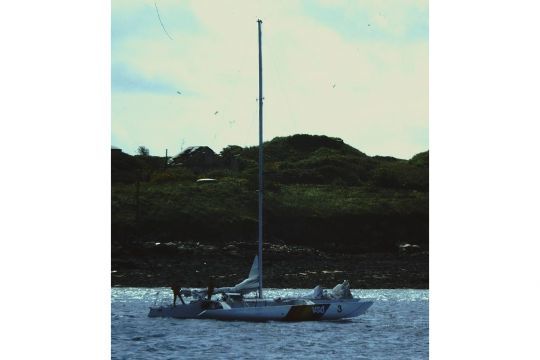
Faced with the control of the "froggies", Kelsall designed a 52-foot trimaran , VSD with which Eugène Riguidel and Gilles Gahinet won the double-handed Transat Lorient-Les Bermudes-Lorient in 1979, ahead of Marc Pajot and �ric Tabarly.
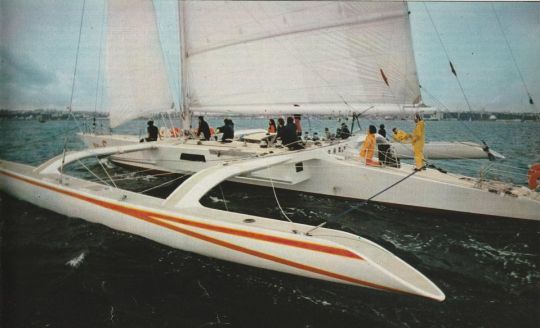
On the strength of this success, Riguidel maintained his confidence in the English architect by ordering a giant 93-foot trimaran from him, William Saurin, which is the largest trimaran in the world at its launch.
A career in yachting
Afterwards, Derek Kelsall left the microcosm of ocean racing to concentrate on the design of pleasure boats. He designs numerous cruising yachts and multihulls.
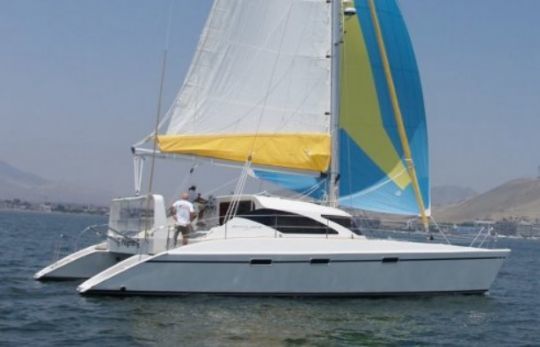
He developed a shipbuilding technique, KSS for Kelsall Swiftsure Sandwich, which consists of cutting flat composite panels instead of shaping them, thus improving shipyard productivity. This technique has been used to build small ferries and cruising yachts , as well as mass-produced models such as the Space 55, Suncat 40 and Islander 39, and larger models such as the 70-foot My Way.
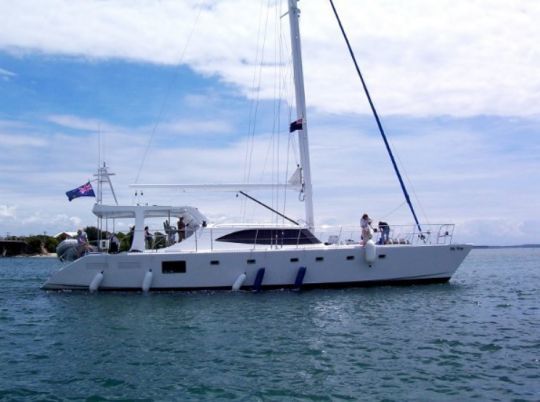
An active retirement at the kiwi's
After the death of his wife Clare, Derek travels to New Zealand in the 90's to follow the construction of a 72 foot catamaran . Falling in love with the country, he decided to settle there and continue his activity as a ship designer. He will give his last strokes of the pencil there before disappearing at 89 years old on December 11, 2022.

- CLASSIFIEDS
- NEWSLETTERS
- SUBMIT NEWS

Multihull design pioneer Derek Kelsall passes away
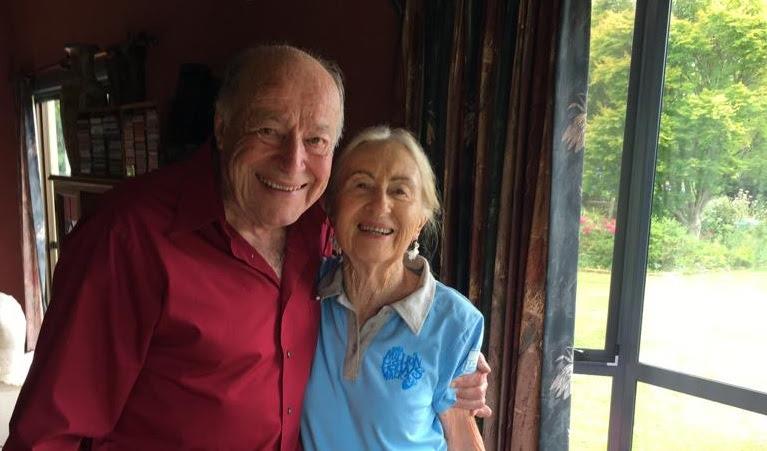
Related Articles
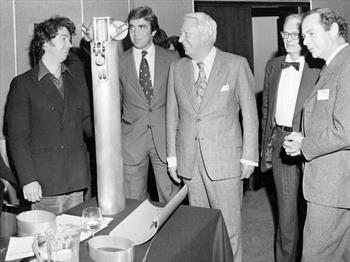
Upcoming Events

- CLASSIFIEDS
- NEWSLETTERS
- SUBMIT NEWS

Noted designer, builder and short-handed offshore sailor Derek Kelsall dies in New Zealand
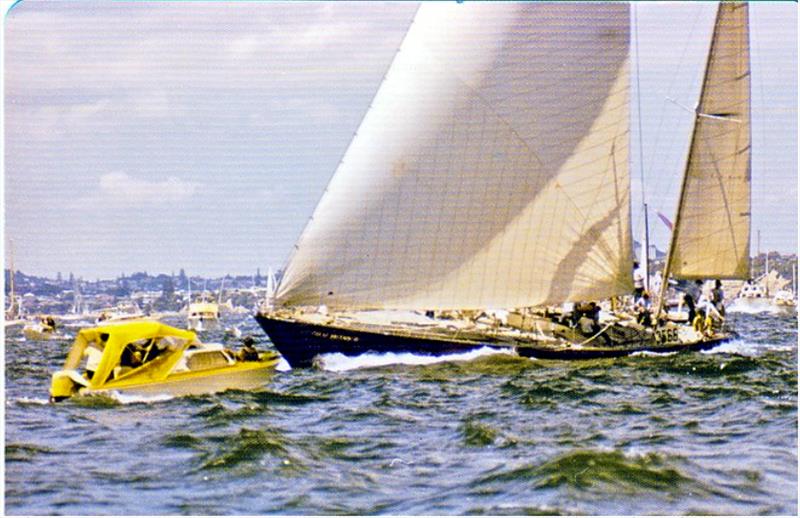
Related Articles
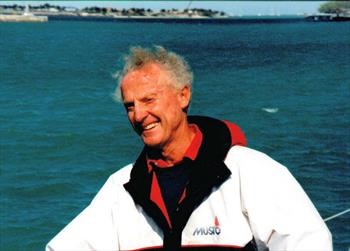

- About Aeroyacht
- Aeroyacht Design
- Aeroyacht TV
- Mission Statement
- Aeroyacht Racing
- Favorite Links
- Customer Testimonials
- Office Location
- BUY A MULTIHULL
- Specifications
- Photo Gallery
- Try Before You Buy
- Yacht Ownership and Demo Sails
- BUY A POWER CATAMARAN
- Yacht Business Ownership FAQ
- MULTIHULLS FOR SALE
- Aeroyacht Superyacht Catamarans
- Global Multihull Search
- Buy A Multihull
- Sell a Multihull
- Multihull News
- Publications & Articles
- Commissioning & Delivery Services
Derek Kelsall – Multihull Pioneer

The world of ocean racing has lost one of its pioneers. Architect Derek Kelsall passed away at the age of 89 on December 11, 2022. He will be remembered as the man who designed the first modern racing trimaran and developed sandwich construction.
About the Author
Social share, catamaran news.

Planet Sail tests a McConaghy Multihull

Charles Caudrelier wins Arkea Ultim Challenge

Nautitech 48 – Control of the Wind

Boat Test: Nautitech 48 Open catamaran

NEEL 52 Trimaran VIDEO – Sailing at 17 knots
- Catamaran Steering Positions
- Catamarans vs. Monohulls
- Catamaran Learning Center
- Catamaran Speed
- Catamaran Efficiency
- Catamaran Stability
- Catamaran Safety
- Catamaran Shallow Draft
- Catamaran No Heel Sailing
- Catamarans and Seasickness
- Catamaran Space
- Catamaran Boat Handling
- Catamaran Advantages over Monohulls
- Wave-Piercing Bows
- Catamaran Sailing Schools
- Catamaran Insurance
- Catamaran Charter Business and Tax Savings
- Ask the Owner
- 5 Valuable Tips
- Survey Checklist
- Sea Trial Checklist
- MULTIHULLS & CATAMARANS App for Iphone
- Catamaran Surveys
- Multihull Services
- Catamaran Build Consultation
- Financing Services
- Catamaran Repair & Service Facilities
- Catamaran Demo Rides & Shows
- Catamarans for China
- Yacht Design
- Interior Styling & Yacht Art
- Photography

McConaghy MC63 Power Tourer – showing her pace
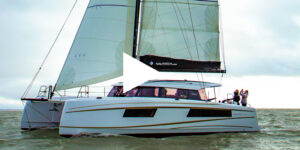
Nautitech 48 Open catamaran – Video

Nautitech 48 catamaran – Interior Design

How the Nautitech 48 catamaran was conceived – Designer Comments.
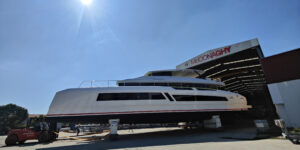
Launched ! – McConaghy MC82P Power
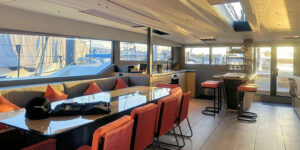
McConaghy 75 catamaran – Stunning NY Loft-Style Interior
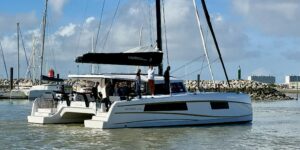
VIDEO: Nautitech 48 catamaran walkthrough. Part 1. EXTERIOR

VIDEO: Nautitech 48 catamaran walkthrough. Part 2. INTERIOR
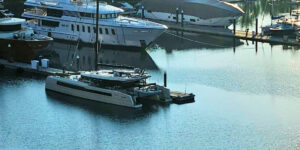
McConaghy 75 Launched.
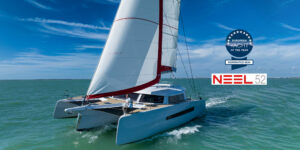
NEEL 52 trimaran nominated European Yacht of the Year 2023
Helpful tips from aeroyacht.

AEROYACHT PUBLICATIONS
Catamaran books by gregor tarjan.

JOIN AEROYACHT’S NEWSLETTER

An Interview with Derek Kelsall — Ex Brit, now of New Zealand
Back in early 2009, I had this interesting discussion with noted sailor, designer and boatbuilder Derek Kelsall, related to his part in the early development and use of PVC foam core and polyester resin for racing monohulls and multihulls. Although not at the time directly related to 'small trimaran design', the work of pioneers like Derek should never be forgotten and his long, successful experience with foam and polyester also needs to be understood and appreciated, as this CAN relate to small tri construction after all —mike 2011

MW: So what got you building composite (foam) boats? DK: The annual Round Britain race caught my imagination, so I designed and built the very first trimaran with PVC foam core and polyester resin hulls and 'Toria' surprised a lot of sceptics when I won the event. I'll email you some pics.

MW: And what did that lead to? DK: I was then invited to build a boat for the new OSTAR race in 1968. This was to be for a Geoffrey Williams who had succeeded in signing up Lipton Tea as a sponsor—Geoffrey had the famous Robert Clarke design him a beautiful 60‑footer and we pushed way beyond the previous 45' limit of foam/glass use to create a boat that was really light but still strong. By pure coincidence, it seemed fitting that we built the boat in the town of Sandwich in Kent. 'Sir Thomas Lipton' , as she was christened, won that OSTAR and took nearly 2 days off the previous best time.

MW: So what was your experience with building this huge hull? DK: Well, things were very rushed. However, just three of us built the entire hull shell in foam and glass and had her all painted in just 700 hours ... ready to receive her interior bulkheads and deck. It was the designers' preference for plywood bulkheads and decking but this slowed construction and although we made the deadline, I was already becoming an enthusiast of foam, glass and polyester.
MW: So what came next for you? DK: I built several other foam composite cruising and racing monos plus a few multis, including a 50' catamaran called Triana which was the first composite catamaran to be built to Lloyd 100A1 classification, but the next major challenge came from a boat built to enter the first 'Whitbread Around the World' race.

MW: And what was your involvement with that? DK: Skip Chay Blyth had succeeded to get sponsorship from Jack Hayward, the person who had salvaged the first IRON ship 'Great Britain I', wrecked on the Falkland Islands. Jack had connections in high places and Royalty became involved when Princess Anne was scheduled to christen the boat. After I agreed to be a construction consultant, we went hunting for a suitable builder along the UK South Coast.
MW: So how did that work out and who was the lucky yard? DK: That became a problem as everyone we asked was too busy to commit to meet our tight schedule! Realising that we'd lose the sponsor if we could not make the Royal launch date, I reluctantly agreed to get a work crew together and supervise the construction.
MW: But was this not another huge boat like the "Sir Thomas Lipton"? DK: Oh quite a lot bigger again! She was to be 78 ft long, 17 ft beam with 17 tonnes of ballast and was by far the biggest sailing yacht of fibreglass composite to have ever been built at that date, so I was really diving in over my head with this one.

MW: So how did the work crew make out? DK: Well it was somewhat of a joke, as we had to make do with whatever we could find. We were again building out in Sandwich, East Kent, and the area had not seen yachts of any real size built there for a decade. So I had to grab general carpenters, painters and labourers from all trades and train them on the job. In fact I did the lofting and frame building with help only from 'a model yacht builder' in an old sail loft! He was great though and went on to lead one of the work shifts.
MW: And what sort of time schedule did you have? DK: It was already November and the boat was scheduled to have this Royal launch the next May! So we soon moved to a double-shift situation running from 6 am to about 9 pm, and I got little sleep as you can imagine. The team soon reached 16, but still no real boat builders and there was still tons to do. Chays' crew were chosen from the Marines and so we pulled them in to help build. Three shifts started, working round-the-clock. Ray (the model builder) now did 4 am to about 4 in the afternoon. I would take over usually about 2 pm and work through till 11 or 12 when I would brief the marine crew on work that could be done till Ray came in at 4 am.
MW: Sounds super hectic. No problem with materials? DK: The most difficult problem I had in the later stages was getting the funds through in time. There was never any doubt that the cheque would come but there seemed to be an army of accountants between us and Jack, whose job was to delay payment for as long as possible. The next big hurdle was a gas strike. The fellow responsible for casting the 17 tonnes of lead keel could do nothing. He was also due to cast a keel for the current Prime Ministers' new 'Morning Cloud' so his reply to me was: "If I can keep Ted Heath waiting, then I can certainly keep Chay Blyth or even Princess Anne waiting too!"
MW: So how was your workforce now working out? DK: The Marines proved to be quite amazing and great to work with. They would do anything, as anyone not pulling their weight risked to be bumped off the crew list. So I now had 32 motivated guys, that were doing an amazing amount of work. I finally had a secretary but there was still at least half a day of chasing this and that to find the thousands of items that go into such a boat. (From what I've read, it would now take 6–8 guys to handle all that planning, and I was also figuring out scantlings and things as we went along.) In those days, we built on a simple batten frame over stations, using foam sheets as large as we could get and lay on. We'd then finish by laying glass on the exterior using mostly UNI cloth—but there was a fair amount of external finishing. It was that work that later led me to develop the KSS system, where the topside gel coat and glass is all done flat on a table with a huge saving in finishing time, as well as visibly better results.
MW: So do you remember anything particularly memorable about the 'GB II' work? DK: I vividly recall turning the hull. Eight tackles with supports from the factory roof beams and she went over with literally just a couple of inches to spare. I also clearly recall the moment when the hull and the ballast came together—two cranes and a howling gale at 2 am in the morning in Ramsgate harbour! The keel had eventually arrived but only with the steel blanks for the galleries still in place! So how do you remove 24 rectangular blocks of steel which have lead, close to a foot thick, cast around them? Well, by hand, slamming a very heavy rod of steel against the end to move a fraction of a millimetre at each impact, was the way it was done. These marines were great for this tough job and it took just a long weekend of very intense effort.
MW: So did you make the planned launch deadline? DK: Yes we did and Princess Anne duly cracked the bottle on the assigned date and GB II slowly trundled down the old rail ramp, but due to the ballast delay, there was still lots to do. But she was now afloat in Ramsgate harbour and far less convenient to work on. However, I finally sailed her to Southampton and handed her over to Chay and his race crew.
MW: And how did she fare in the Race? DK: Well our crazy effort was well rewarded as she was first to finish the Whitbread that year. Sadly, the victory was marred by a really unfortunate accident. One of the most enthusiastic and daring of the great marine crew, took one risk too many and was lost overboard.
MW: So how did the composite polyester, foam and glass hull stand up over time? DK: GB II went on to race 4 or 5 more Whitbread races. But new refinements and weight savings for new boats made her no longer competitive with her 17 tons of keel. Ballast and scantlings dropped a lot over the next decade but GB2 was certainly very resilient. I met many past crew members over the years and the one common fact was that they all expressed tremendous confidence in the boat. At my last count, GB II had gone 6 times around the world and about 50 times across the Atlantic. Also she was raced by others under different boat names she sadly always seemed to be on budgets too small to sufficiently update her. But personally, I do not know of any yacht which could match the mileage she sailed, though I have lost track of her during the last ten years. As a boat built by men, of which not one could call himself a boat builder, I feel this is a record of significance which to me, is a powerful testimony to the materials and the build method. There can surely be no better test for a yacht than extensive long-distance racing in all sorts of weather over many years.
MW: In retrospect, is there anything you would have changed in the construction? DK: As for the OSTAR boat by Robert Clark, designer Alan Gurney had persuaded us to use ply bulkheads in GB II . and at one stage, a bulkhead cracked and had to be reinforced. So there's one thing I would change as every time I have seen a foam sandwich hull with plywood, it is almost always the plywood which causes the problems. Bulkheads of the same foam sandwich as the hull and decks have always been 100%. From that boat on, I decided that for all my own designs, it would be foam sandwich throughout and I've never regretted the decision. Even today, we continue to use foam and polyester for most of our KSS designs and have no structural problems. As far as GB II , at one stage it was noted that the coffee grinders were tilting and the deck waved slightly ahead of them. The dip in the deck was filled with filler and foam and more glass added over before refixing the coffee grinders. Apart from a couple of bubbles on the bow, due to outgassing of the foam, I know of no problems other than routine maintenance. Her dark maroon paint probably added to the outgassing.
MW: Well thanks a million for sharing this fascinating experience from the past and great to see that you're still actively designing and building boats…and still successfully proving that the combination of glass, vinyl/polyester resin and cross-linked PVC foam, is still a very good formula at relatively low cost—especially when used with resin infusion as now regularly done with KSS. DK: You're most welcome and it's been fun to look back. Good luck with your W22. Looks good.

This fine Kelsall yacht was appropriately named when considering its very focussed designer, who definitely knows how he wants things to be … "My Way". I personally like many things about Derek's designs but two particularly hit home with me. His straight lines and low rocker hulls. Both add speed and efficiency and his flat decks are also safe and easy to work from. All features happily shared on my own designs.
FOOTNOTE: Sadly all good things come to an end, and Derek passed away in Dec 2022 at the age of 89.
A brief story of his long and active life, particularly as a pioneer and creator of many composite catamarans is GIVEN HERE
"New articles, comments and references will be added periodically as new questions are answered and other info comes in relative to this subject, so you're invited to revisit and participate." —webmaster
"See the Copyright Information & Legal Disclaimer page for copyright info and use of ANY part of this text or article"
Multihull Centre Brokerage
The multihull specialists.
Mill Road, Millbrook, Cornwall PL10 1EN, UK.
++44 (0)1752 823900

SPECIFICATIONS
Draft: 0.32 – 1.29m
Lying: Multihull Centre
Design: Kelsall Kss-r-30
Designer/Builder: Kelsall Ian Bevan/assembled by Multimarine
Built/Launched: 2008/ Wales / Millbrook
Polyester foam sandwich hulls. Dagger boards are composite construction.
Accommodation:
2 x double berths and 2 single berths, in the spacious hulls.
Heads area with sea toilet.
Galley area fitted with single burner gas hob.
Standing headroom of 5ft 10 inches.
Rig & Sails
Rig Type: Masthead sloop
Spars: Alloy
Standing rigging: SS
Running Rigging: Dyneema
Spar Maker: Z Spars
Some repair work needed on the bowsprit
Reefing: Slab
Spinnaker gear: Yes, including top-down snuffer.
Sails Main and Genoa in white.
Fully battened, flat top main
Spinnaker coloured.
All made by Banks. New sail cover.
1 x Suzuki 15HP EFI outboard with electric start, fuel injection & remote control.
150 hrs, 6 knots cruising speed, tiller steering.
Last serviced 2021
Navigation Equipment:
Compass : 2
Speed : Yes Autohelm Tri Data
Depth : Yes
VHF : Yes + emergency antenna
AIS : Connected lat/long to VHF
Ground Tackle:
Bruce
10kg 20m chain, 20m warp + bow roller
2 Spinnaker
All Lewmar 40
Electrics:
Type : 12 v
Batteries: 1 x 120Ah “House”, 1 x 60Ah Starting
Switched: Yes
Shore power: Yes – cable + 3 pin + battery charge
Solar Panels: 1 25w + controller
Charging: Alternator/Solar Panel
Autopilot: TP10
Fuel: 1 x 20l Polypropylene, 2 x 5l
Fresh water: No
Holding tank: No
Water system: No
Heating: No
Sea Water: No
Other Equipment:
Fire Extinguisher : 2 x 2kg
Bilge pumps : 2 manual
Nav lights : Masthead LED
Dinghy : Avon Redstart + oars
Warps, Fenders, boathook and bow fender.
Horseshoe buoy and light
Guard wire, pushpit and pullpit

Viewing by appointment with the Multihull Centre, Foss Quay, Millbrook, Torpoint,
Cornwall, PL10 1EN, Tel. 01752 823900, Option 2
These details are believed to be correct but cannot be guaranteed and do not constitute any form of contract. All statements made therein are made without responsibility and the intending purchaser must satisfy himself as to their correctness. Survey by a qualified marine surveyor is also strongly recommended.

The Watercats 46ph (performance pilothouse) was designed by multihull legend Derek Kelsall and built by the owners of a boatbuilding company for their own use.
The design and building process is the distillation of a lifetime love of sailboats and liveaboard and cruising multihull experience.
- About Us and the boat
- Specifications
- 0 No item in your cart
- SUBSCRIPTION
- Classified Ads
- Technical Specifications
- Destinations
- Address book

- All the magazines
A Kelsall 60 with an innovative rig

Article published on 05/09/2017
By Jean-Christophe Guillaumin
published in n°155 sept. / oct.

Founded in Peru in 1962 by two Italian brothers, the Ballotta yard has since built over 500 boats.
Create a notification for "News from the builders"
We will keep you posted on new articles on this subject.
The latest boat from the builder is this 60-foot catamaran designed by Derek Kelsall, with an original rig. Two rotating mats – one on each hull – each equipped with just a mainsail. Easy to handle, even singlehanded, this system is attractive for ocean cruising. The boat is moreover powered by a hybrid system...
Information: www.cata-ballotta.com
Did you like this article ?
Share this article
Most-read articles in the same category.
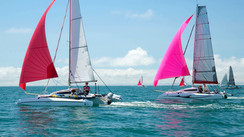
Astus Boats Club - Ask for the 2024 program!
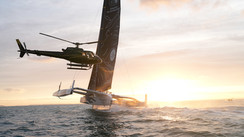
Arkea Ultim Challenge - Brest: Charles Caudrelier's coronation aboard his Maxi Edmond de Rothschild
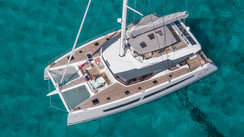
Alegria 67 - A Jacuzzi at La Grande-Motte?
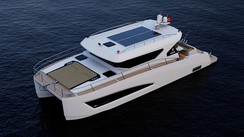
Discovery 40 - A sedan built in Turkey
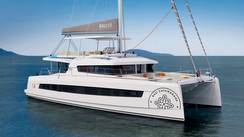
Bali 5.8 - The new flagship of the range
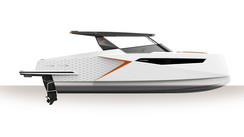
Dracan 42 - Another manufacturer on the powercat market!
What readers think.
Post a comment
No comments to show.
Follow us on
Vous avez ajouté " " à vos favoris., vous avez supprimé " " de vos favoris., in order to add this article to your favorites, please sign in..
Sign-Up for News & Stories
Stephens Waring Yacht Design
Spirit of Tradition Yachts Designed In Maine
Home » News » SWD News & Stories » A Second Life for a 25 Catamaran
A Second Life for a 25 Catamaran
Posted on June 13, 2022 and filed under SWD News & Stories
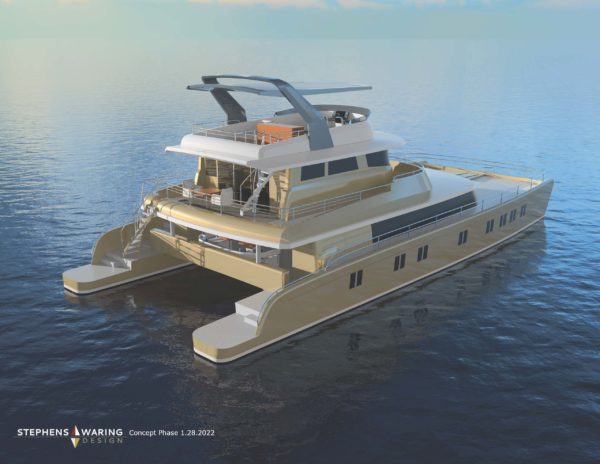
Concept plan for 25M BONEFISH. Stephens Waring has embarked on a top-to-bottom renovation and reimagination of this classic power cat.
It’s not every day you get to put your full imagination, creativity, and problem solving skills into a single project. The renovation of 25M the Powercat BONEFISH requires all three in spades.
HISTORY OF THE YACHT
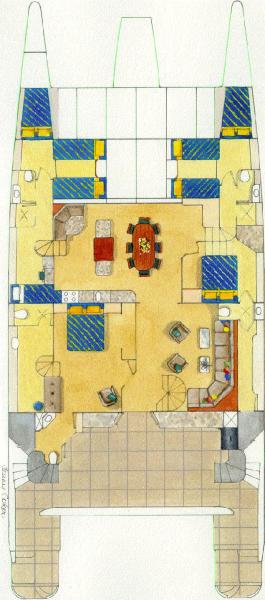
Original early 90’s plans from New Zealand designer Derek Kelsall show a vision for a blue water, sloop-style, sailing catamaran.
The yacht was originally designed by notable New Zealand designer named Derek Kelsall who made a name for himself with multihull designs in the 90’s
The original design called for an around the world, blue-water sailing catamaran, sloop-style rig. The drawings show a design for a sailing cat with the mast stepped forward of a superstructure and the headstay was made to a centerline nacelle where the anchoring and ground tackle are currently located. Staying rigging was to be attached at the sheer of each hull on the port and starboard side. In the current configuration you can see a centerline shaping of the flybridge coaming area that is heavily raked and sits low to accommodate a boom on the rig.
During an arduous, challenging, and long original build, the owner decided to abandon the sailing rig and moved toward powerboat design. For the past decade Bonefish has served her owner as a cruising power cat primarily used for private and charter fishing and leisure.
GOING FROM SAIL TO STEAM
While unusual, it’s not necessarily a bad idea to take a lightweight configuration of a sailing cat and convert it to a power boat. The primary challenge when starting with a sleek low volume hull design is avoiding overburdening the structure with the typical overladen themes found in most power yachts. There are limitations set forth by how slender and sleek the design was originally meant to be. Most equipment and specs for powerboats don’t fit that well into such a sleek package.
THE REDESIGN
The renovation on this project is extensive. We’re essentially blue-skying the entire yacht from the inside out. The flying bridge, pilothouse, and bridge deck level will all be scrapped and redesigned.
The existing wing deck cabin trunk will be left intact, but heavily restyled. A whole new plan view shape will be established. The new design offers all new aesthetic style differences and a much more sophisticated level of construction and finish detail throughout.
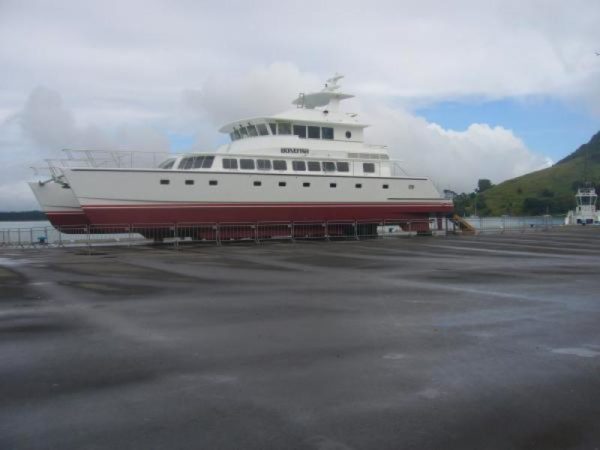
During the original construction of Bonefish in the 90’s, decisions were made to convert her from a blue water sailing catamaran to a high-functional powerboat.
THE CHALLENGE AND OPPORTUNITY
There are many challenges, but the construction choreography, nuances of design solutions, and the various problem-solving on the renovation of an existing boat are much harder than whendesigning something new from a blank slate.
When you start from scratch you have all the freedom to strike your own line and to balance the various spaces the way you want. Even if you’re going down one route, if you don’t like where it’s going, you can change direction and go another way. When you’re working with an established space the realm of possibilities is much more confined. You need to work with what’s there and what’s in front of you. That challenge is also the opportunity as it forces a greater level of discipline and creativity, which is something that gets us excited. It also makes for an exciting journey for the owners, builders, and fans of the boat.
STEPHENS WARING DESIGN RENDERINGS FOR BONEFISH
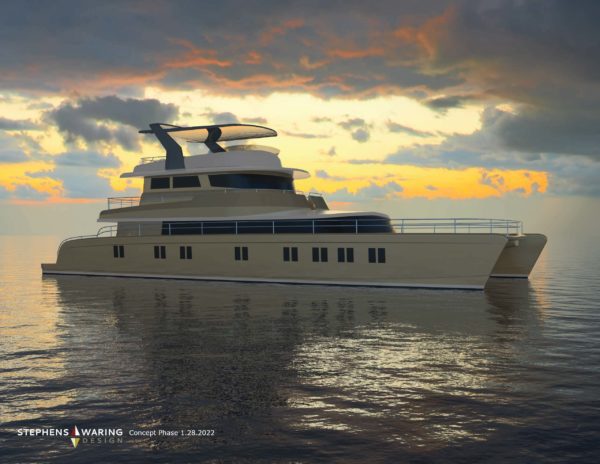
Read more about Stephens Waring Renovations:
Boat Renovations and Restorations 101
The Renovation of Marilee
The Renovation of Zingara
site by: slickfish studios
Obituary : Derek Kelsall - the pioneer of multihulls
Johannes Erdmann
· 02.01.2023
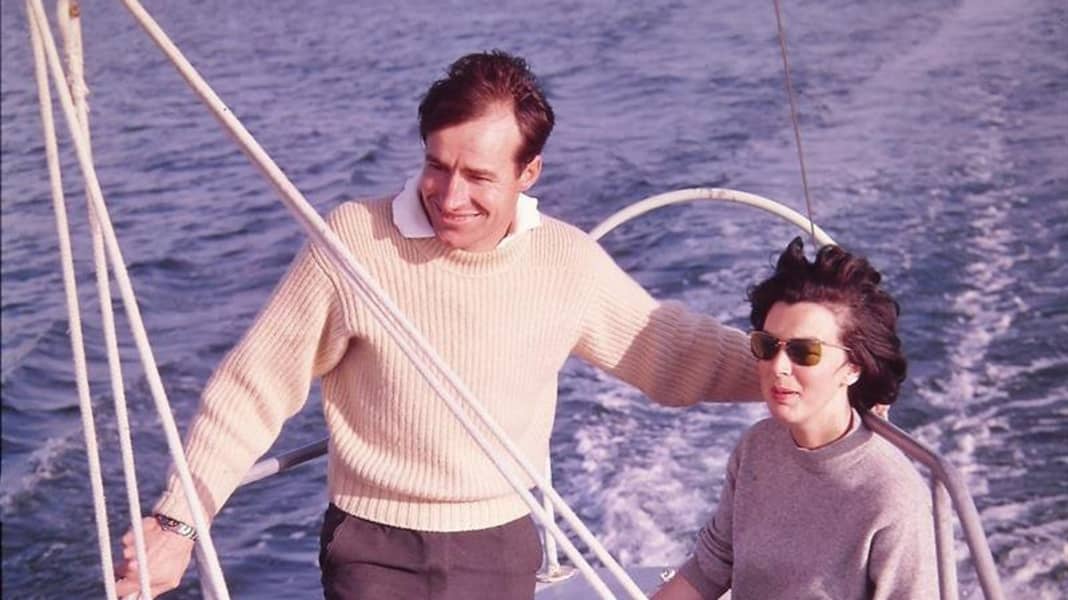
England has produced many good sailors, boat builders and designers. Derek Kelsall, on the other hand, was born in 1933 as the son of a farm labourer and initially grew up in the most humble of circumstances, far removed from the sport of sailing. He was unable to complete his degree in mechanical engineering because he ran out of money. He switched to the oil business and worked for BP in Kenya for a while before moving to Texas. There in the USA, and particularly on the west coast, the construction of multihulls was much more popular than in Europe. In 1967, YACHT portrayed the four most important designers in California (Dr Hugo Myers, Ralph Flood, Norman A. Cross, Rudy Choy) in an entire series. It was the heyday of multihull construction - and it was during this time that Derek Kelsall must have made the decision to switch from the oil industry to a field that had always interested him: the construction and design of multihulls.
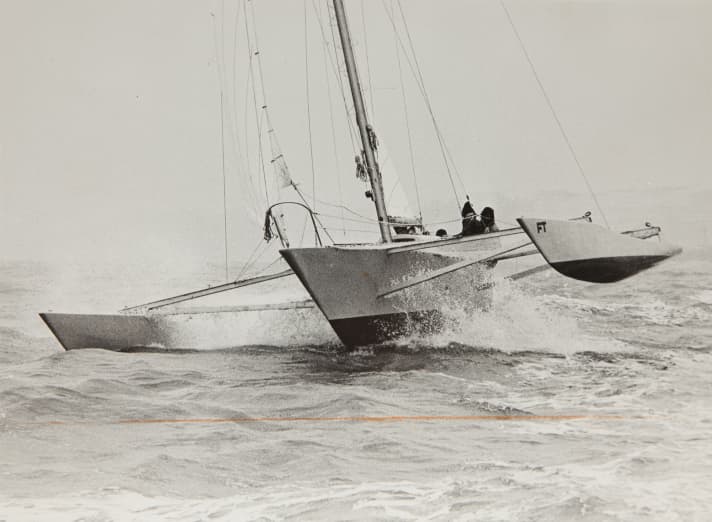
In 1964, Kelsall signed up for the second Observer Singlehanded Transatlantic Race (OSTAR) and quickly ordered a 35-foot Arthur Piver trimaran, which he named "Folatre". Two months after ordering the boat, he was already leading the race field out of Plymouth harbour and sailed far ahead for five days, right behind Eric Tabarly, until a collision with a floating object forced him to abandon and return. After repairing the boat, Kelsall set sail again from Plymouth and reached Newport in Rhode Island without any problems after 34 days at sea.
Most read articles
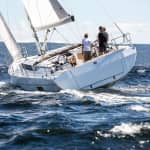
His piver-trimaran was an unusual boat in the OSTAR, built entirely from plywood, rigged as a ketch and equipped with a wind self-steering system. In addition, "Folatre" was the first multihull to start without any ballast, which was unusual at the time. There were two catamarans at the start of the same race that had ballast keels.
The "Toria" set standards
During his single-handed Atlantic crossing, Kelsall gained a lot of experience that he would later incorporate into the design of his own trimarans. The 45-foot trimaran "Toria", which Kelsall designed himself and named after his daughter, was launched in 1966. The ship set standards for the construction of racing trimarans that have endured to this day. In addition, "Toria" was the first boat to be built using the new technology developed by Kelsall: With a core made of Airex foam, the hull could be built stable but light as a feather. Kelsall named the technology after the place where his shipyard was located: the small town of "Sandwich" in the county of Kent.
"Toria" easily won the Round Britain and Ireland double-handed race in 1966, and Kelsall's success story began. The following year, Kelsall introduced the French sailing legend Eric Tabarly to trimaran sailing on a transfer of "Toria". But instead of giving Kelsall the order for a new tri, he had his compatriot André Allègre design a 68-foot aluminium trimaran ("Pen Duick IV"), which was far too heavy and, to make matters worse, was damaged in a collision during the 1968 OSTAR race. But Kelsall had no reason to mourn the loss of the commission, because instead he was given the task of building the 57-foot monohull "Sir Thomas Lipton" for Geoffrey Williams. In Sandwich. From Sandwich. The boat won the race with 17 hours to spare.
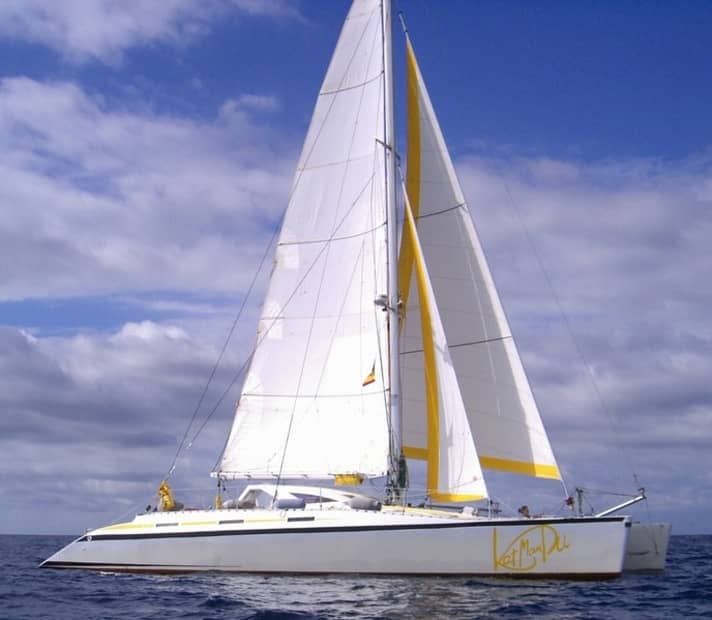
After many other regatta boats and successes, Derek Kelsall began to design mainly fast cruising catamarans in the early 1980s, which could also be built by boatbuilding amateurs themselves using the KSS system (Kelsall Swiftsure Sandwich). He developed a vacuum technology that enabled even self-builders to produce stiff and light hulls with the simplest of means.
"Derek Kelsall made it possible for me to start building modern boats," says Burkhard Bader. Since 1985, he has been THE contact person in this country when it comes to building a Kelsall catamaran. "By 2006, I had passed on over 100 of his construction plans to German self-builders and built and supervised around 35 new builds in my workshops."
Many Kelsall boats are still on the water today
Almost all of the boats are still sailing today. "Like Paul Maier's 'Matangi', for example," says Bader. He was the first person Bader worked with in 1985. "He built his Tonga 40 with and for me in Kiel, then transferred it to the Moselle as a hull on his own keels in December to do the interior work." Maier then sailed around the world with his family for years and, after many years at home, is now sailing around the world again. "His boat is now 37 years old and even sailed from Germany via Greenland to the South Seas in 2022, mostly single-handed."
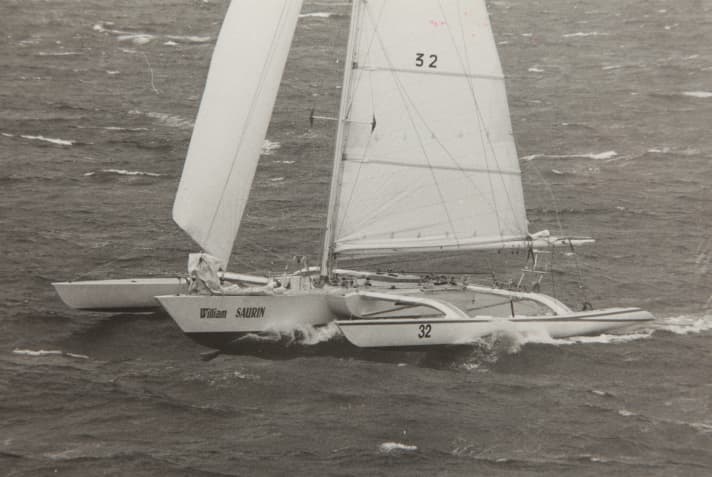
According to Bader, the success of Kelsall's ships is not least due to the comprehensible construction plans. "Although he was English, Kelsall used the metric system," he says. The lightweight construction method was also considered revolutionary at the time: "Vacuum bonding was Derek Kelsall's idea," says Bader, "nobody in German boatbuilding was familiar with the technology at the time." Due to a lack of professional systems, the boat builder only needed several hoovers as a tool to generate the vacuum. "More precisely: the negative pressure," Bader clarifies, "because a complete vacuum is not achieved. Later, I used a pasture milking pump, which also worked."
In the mid-90s, Derek Kelsall emigrated to New Zealand and found his new home there, where he continued to draw boats until the end of his life.
- Further information on the page of Derek Kelsall
Most read in category Special

Legendary designer Derek Kelsall certainly knows about catamarans. His boats are build around the world by amateurs and professionals. A pioneer in foam sandwich construction, his designs are built quickly, simply and robustly using the KSS construction methods.
There are no catamarans currently for sale by owner of this brand.
Please see our catamarans for sale by owner page for a full listing of other currently available models.
Kelsall Catamarans
Saturday, may 7, 2011.
- New Facebook page for Kelsall Catamarans Ltd
Introduction.
Starting a Facebook account for Kelsall Catamarans Ltd. , we should start at the beginning. The 45 th . anniversary of the first major Kelsall win seems appropriate. Derek Kelsall's Round Britain Race win with his first own design, the trimaran Toria was a defining moment for multihulls. Toria was the first foam sandwich yacht of note. She not only set the style for materials choice she set the style for all future racing trimarans, which have dominated offshore racing ever since. The 2000 mile, two handed race was the first open race to be won by a multihull. It was a great race – races usually are when all your competitors are behind you. The materials have since become the gold standard for all yachts. To summarize, this was a unique, designed, built, raced and won situation which also set styles for others to follow.
Kelsall design and build lead the way in 1966 and still leads today. Today, we do not hesitate to claim World leadership in boat building technique, with KSS. No designer can match the numbers and variety of designs produced by the Kelsall team. Our competitors are still behind us, by a very long mile, particularly when it comes to custom boat building technique.
The wide experience coming from a vast number of projects of all kinds, in designing, building, operating and even maintaining is the basis of all the decisions that make up a winning design. By making decisions only this way we differ from the crowd on many issues.
Fashion has an amazingly strong influence on both designs and boat building methods. We will address these issues with our detailed explanations and reasons not to follow fashion from time to time on our facebook pages.
Happy Boating.
Derek Kelsall. FRINA.
Thursday, February 4, 2010
Youtube kelsall history, saturday, may 2, 2009, newly launched kelsall catamaran designs., wednesday, january 21, 2009, tons of wet balsa, wednesday, april 23, 2008, catamaran designs and plans, kss catamarans - state of the art in custom boat building, blog archive.
- ► February (1)
- ► May (1)
- ► January (1)
- ► April (2)


- Sports & Outdoors

Download the free Kindle app and start reading Kindle books instantly on your smartphone, tablet, or computer - no Kindle device required .
Read instantly on your browser with Kindle for Web.
Using your mobile phone camera - scan the code below and download the Kindle app.

Image Unavailable

- To view this video download Flash Player
Follow the author

Catamaran Sailing (Helmsman Guides) Paperback – January 1, 1993
- Print length 128 pages
- Language English
- Publisher Crowood Pr
- Publication date January 1, 1993
- Dimensions 6.5 x 0.5 x 9.25 inches
- ISBN-10 1852237082
- ISBN-13 978-1852237080
- See all details

Product details
- Publisher : Crowood Pr (January 1, 1993)
- Language : English
- Paperback : 128 pages
- ISBN-10 : 1852237082
- ISBN-13 : 978-1852237080
- Item Weight : 10.8 ounces
- Dimensions : 6.5 x 0.5 x 9.25 inches
- Best Sellers Rank: #6,430,488 in Books ( See Top 100 in Books )
About the author
Derek kelsall.
Discover more of the author’s books, see similar authors, read author blogs and more
Customer reviews
Customer Reviews, including Product Star Ratings help customers to learn more about the product and decide whether it is the right product for them.
To calculate the overall star rating and percentage breakdown by star, we don’t use a simple average. Instead, our system considers things like how recent a review is and if the reviewer bought the item on Amazon. It also analyzed reviews to verify trustworthiness.
No customer reviews
- Amazon Newsletter
- About Amazon
- Accessibility
- Sustainability
- Press Center
- Investor Relations
- Amazon Devices
- Amazon Science
- Start Selling with Amazon
- Sell apps on Amazon
- Supply to Amazon
- Protect & Build Your Brand
- Become an Affiliate
- Become a Delivery Driver
- Start a Package Delivery Business
- Advertise Your Products
- Self-Publish with Us
- Host an Amazon Hub
- › See More Ways to Make Money
- Amazon Visa
- Amazon Store Card
- Amazon Secured Card
- Amazon Business Card
- Shop with Points
- Credit Card Marketplace
- Reload Your Balance
- Amazon Currency Converter
- Your Account
- Your Orders
- Shipping Rates & Policies
- Amazon Prime
- Returns & Replacements
- Manage Your Content and Devices
- Recalls and Product Safety Alerts
- Conditions of Use
- Privacy Notice
- Your Ads Privacy Choices

COMMENTS
Obituary: Multihull design pioneer Derek Kelsall . The sailing world has lost a pioneering multihull designer and boat builder. Derek Kelsall, the man who during his life created the modern day trimaran, who famously introduced Eric Tabarly to multihulls and who was one of the first to champion foam sandwich construction, died on Saturday 11th December in hospital in Thames, New Zealand, aged 89.
By Dieter Loibner, May 31, 2023. Derek Kelsall in the cockpit of Toria sails with his wife, Clare, at the helm. The sailing world has lost a pioneering multihull designer and boat-builder. Derek Kelsall, who famously introduced Eric Tabarly to multihulls, and who was one of the first to champion foam sandwich construction, died at 89 last ...
Derek Kelsall Interview. We spoke with legendary catamaran designer Derek Kelsall. We cover his history and innovations in catamarans design and construction such as the foam coring, KSS. We ask him why his designs and build techniques are so heavily criticized. He talks about what size of a catamaran that a couple or family should purchase and ...
Architect Derek Kelsall passed away at the age of 89 on December 11, 2022. He will be remembered as the man who designed the first modern racing trimaran and developed sandwich construction. ... Derek travels to New Zealand in the 90's to follow the construction of a 72 foot catamaran. Falling in love with the country, he decided to settle ...
Derek Kelsall, the man who during his life created the modern day trimaran, who famously introduced Eric Tabarly to multihulls and who was one of the first to champion foam sandwich construction, died on Saturday 11th December in hospital in Thames, New Zealand, aged 89. Derek was born in rural North Wales on 15 May 1933 into humble surroundings.
Derek Kelsall the British-born pioneer in composite construction technology, offshore multihull design, and noted short-handed and singlehanded offshore and trans-oceanic race sailor, died in Thames, on the Coromandel Peninsular, east of Auckland, on December 11, 2022. He was 89.
Architect Derek Kelsall passed away at the age of 89 on December 11, 2022. He will be remembered as the man who designed the first modern racing trimaran and developed sandwich construction. ... Catamaran News. Planet Sail tests a McConaghy Multihull March 12, 2024; Charles Caudrelier wins Arkea Ultim Challenge March 12, 2024; Nautitech 48 ...
All features happily shared on my own designs. FOOTNOTE: Sadly all good things come to an end, and Derek passed away in Dec 2022 at the age of 89. Naval architect and boatbuilder, Mike Waters, interviews noted sailor, designer and builder, Derek Kelsall, for insight into his work, and a review of some of his designs.
Derek Kelsall (1933-2022) was an English multihull sailboat designer latterly resident in New Zealand. He began his career in surveying and in the oil industry, but found the lure of boats too great to ignore. Designs. A partial list of Kelsall's designs follows. Toria (1966) Trifle (late 1960s) Tonga 39ft catamaran; References
Kelsall-KSS-R-30. Lilly is a fine performance open bridgedeck catamaran designed by Derek Kelsall and built using his KSS methods to a high specification. The boat has only been lightly used since launched in 2008. For its size and price Lilly offers a well kept, fast boat with accommodation for four and is equipped with the basics for spending ...
[Sold]This magnificent catamaran with a classic design benefits from a double beautiful origin: The architectural signature of Derek Kelsall (very famous des...
Designed by Derek Kelsall and built by J. Partington in Lancaster, Great Britain in 1997 this 1997 Kelsall KSS 45 sailing catamaran has recently completed ci...
Watercats 46ph. The Watercats 46ph (performance pilothouse) was designed by multihull legend Derek Kelsall and built by the owners of a boatbuilding company for their own use. The design and building process is the distillation of a lifetime love of sailboats and liveaboard and cruising multihull experience. Unique 46' sail catamaran for sale.
The latest boat from the builder is this 60-foot catamaran designed by Derek Kelsall, with an original rig. Two rotating mats - one on each hull - each equipped with just a mainsail. Easy to handle, even singlehanded, this system is attractive for ocean cruising. The boat is moreover powered by a hybrid system...
The yacht was originally designed by notable New Zealand designer named Derek Kelsall who made a name for himself with multihull designs in the 90's. The original design called for an around the world, blue-water sailing catamaran, sloop-style rig. The drawings show a design for a sailing cat with the mast stepped forward of a superstructure ...
Sailing Yachts Built in 2021 with Designs by Derek Kelsall Catamarans. There are currently over 10,800 yachts afloat. The longest yacht in the world is Azzam, measuring 180.61m (592'7'). She was built in 2013 by Lürssen. The largest yacht in the world is Fulk Al Salamah, built by Mariotti in 2016, with a volume of 20,361 GT.
"Derek Kelsall made it possible for me to start building modern boats," says Burkhard Bader. Since 1985, he has been THE contact person in this country when it comes to building a Kelsall catamaran. "By 2006, I had passed on over 100 of his construction plans to German self-builders and built and supervised around 35 new builds in my workshops."
There are no catamarans currently for sale by owner of this brand. Please see our catamarans for sale by owner page for a full listing of other currently available models. Legendary designer Derek Kelsall certainly knows about catamarans. His boats are build around the world by amateurs and professionals. A pioneer in foam sandwich constructio.
Derek Kelsall's Round Britain Race win with his first own design, the trimaran Toria was a defining moment for multihulls. Toria was the first foam sandwich yacht of note. ... Their second Kelsall is well underway - a 51 ft. sailing catamaran. Some of our KSS techniques can be applied to alloy build and we are happy to recommend this builder to ...
Kelsall's system or similar is definitely going to save thousands of hours of filling/sanding/fairing compared to other glass one-off systems. We are considering building a 42' Kelsall designed GRP catamaran. I would like to hear from anyone who has experience with this method, (preferably other than just a workshop).
SuperYacht Times hosts the ultimate directory of the global yacht fleet and yachts for sale designed by Derek Kelsall Catamarans. Yachts for Sale with Designs by Derek Kelsall Catamarans. SuperYacht Times has compiled the largest fleet of yachts for sale. Our data analysts gather valuable information about every superyacht larger than 24-metres ...
1999. 39'. 22'. 3.6'. Outside United States. $105,000. Description: We ve been sailing in this boat for almost 3 years. We are the second owners, the first one and builder from Switzerland, who put together this boat in 7 years using the best materials possible.
Catamaran Sailing (Helmsman Guides) [Kelsall, Derek] on Amazon.com. *FREE* shipping on qualifying offers. Catamaran Sailing (Helmsman Guides)